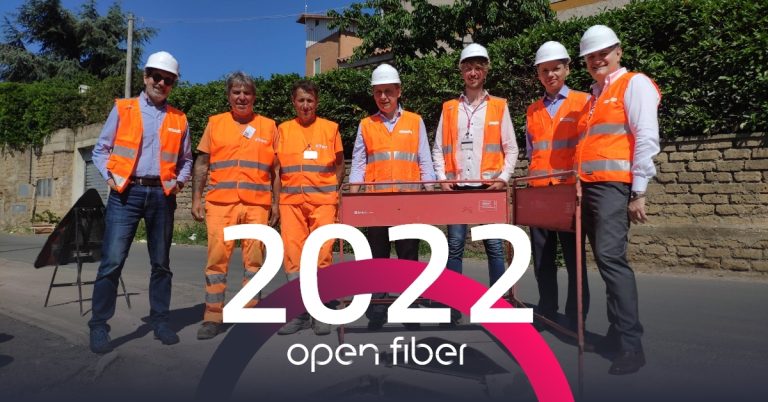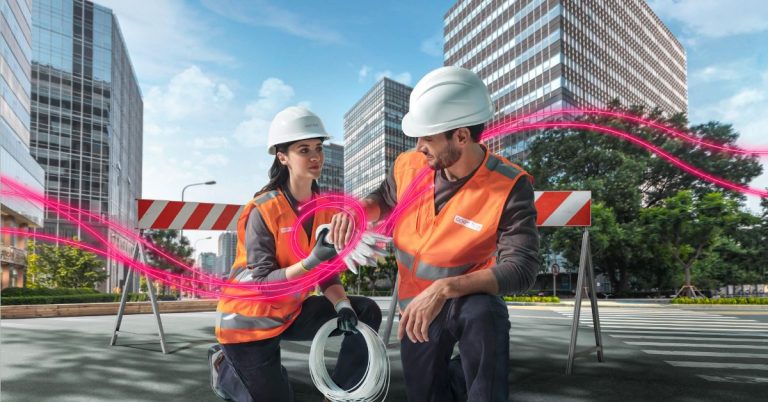L’FTTH Council lo attesta: con 2,8mln di unità immobiliari cablate in un anno, ci meritiamo il podio. Il ruolo di Open Fiber.
Oltre 2,8 milioni di unità immobiliari cablate in Italia tra il 2019 e il 2020: sono i numeri da record del report Idate presentato dall’FTTH Council Europe. Questo ci rende il secondo Paese in Europa, poco dopo la Francia, per crescita della copertura in fibra ottica con tecnologia FTTH (Fiber To The Home) o FTTB (Fiber To The Building). Dopo di noi, la Germania con +2,7 milioni, mentre le restanti nazioni seguono con notevole distacco.
La diffusione della rete in fibra ottica FTTH continua ad aumentare nel nostro Paese. Decisivo il ruolo di Open Fiber.
Sviluppo della rete FTTH in Italia: i dati del Report Idate
L’FTTH Council Europe, un’organizzazione di imprese europee che si pone l’obiettivo di accelerare la diffusione della rete in fibra ottica, ha di recente pubblicato un report redatto da Idate . Si tratta di una complessa fotografia della copertura FTTH/B a livello europeo com’era alla fine di settembre 2020. L’Italia, con circa 11 milioni di unità immobiliari raggiunte dalla fibra ottica FTTH/B, può vantare una copertura totale pari al 41% del territorio: siamo ancora più vicini alla media europea e notevolmente più avanti di Paesi come il Regno Unito, che è al 15%.
Solo qualche anno fa eravamo il fanalino di coda in Europa, mentre due anni fa – nel periodo 2018-2019 – eravamo già al 30,6% di copertura e nell’ultimo anno abbiamo guadagnato altri 10 punti percentuali, balzando in avanti di ben quattro posizioni. Questo è il notevole risultato raggiunto in termini di crescita della copertura con rete FTTH/B che, grazie soprattutto all’impegno di Open Fiber, ci ha fatto guadagnare il secondo posto nella classifica europea
La nostra AD Elisabetta Ripa riassume:
“Quanto fatto in Italia durante questi anni è stato straordinario. Abbiamo lavorato intensamente e i risultati oggi sono tangibili: la stragrande maggioranza dei progressi fatti del nostro Paese in Europa sono dovuti all’ingresso di Open Fiber nel mercato, che ha contribuito per oltre l’80% all’aumento delle connessioni in fibra ottica FTTH. C’è ancora strada da fare ma i progressi sono consistenti. L’Infrastruttura ultrabroadband di Open Fiber raggiunge già oggi più di 12 milioni di unità immobiliari, di cui 7,3 milioni di abitazioni, uffici e aziende nelle grandi città e oltre 4,7 nei piccoli comuni. La commercializzazione dei servizi su rete Open Fiber è aperta in circa 2.400 comuni, di cui 185 nelle grandi città e oltre 2.200 nelle aree bianche. Open Fiber, nonostante la sua giovane età, si conferma così il terzo operatore FTTH europeo dopo la spagnola Telefonica e la francese Orange”.
Il futuro della rete in fibra ottica in Italia
Non c’è dubbio: siamo nella direzione giusta ma la strada è ancora lunga. Il nostro scopo è ridurre il gap infrastrutturale alla base del digital divide e creare una rete a banda ultra larga diffusa in maniera capillare su tutto il territorio nazionale. Tra le nostre priorità, procede senza sosta la copertura con rete ultraveloce dei Piccoli Comuni delle Aree Bianche..
Altro risultato degno di nota è il cablaggio con rete FTTH di oltre 10mila scuole, che ha consentito agli istituti di fronteggiare in maniera più efficiente l’emergenza Covid.
Resta però necessario lavorare in sinergia con le Istituzioni perché i risultati ottenuti possano essere fruibili dai cittadini nel più breve tempo possibile. Il programma voucher lanciato dal Governo lo scorso anno per sostenere la domanda di connettività ultraveloce è una delle possibilità più concrete per stimolare l’adozione di questa tecnologia da parte delle persone residenti in Italia.
Non solo: abbiamo deciso di essere assolutamente trasparenti con tutti i cittadini perché crediamo che la fiducia sia l’unica via possibile per raggiungere il nostro obiettivo. Per questo motivo, sul nostro sito web è possibile verificare lo stato dei lavori in Italia e controllare la copertura dei Comuni sul suolo nazionale.
Il nostro lavoro prosegue senza sosta: scopri se siamo già arrivati da te.










